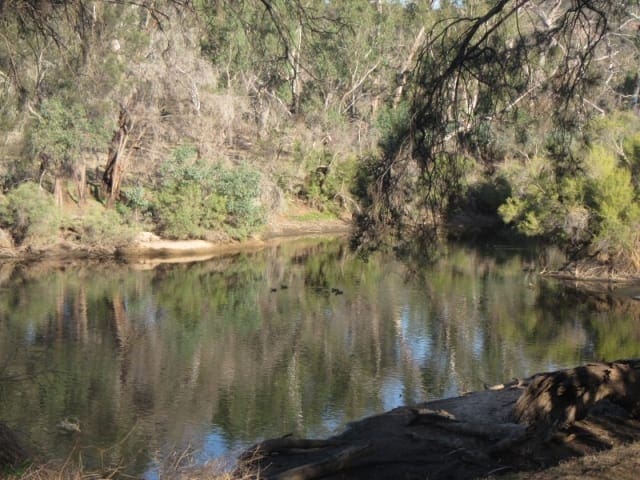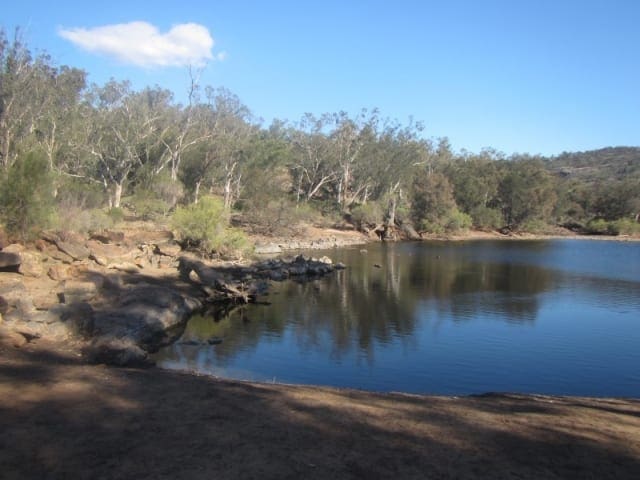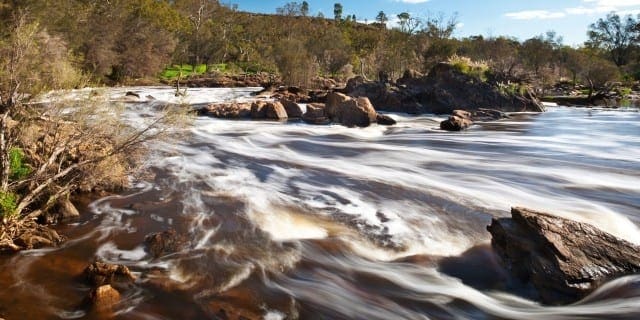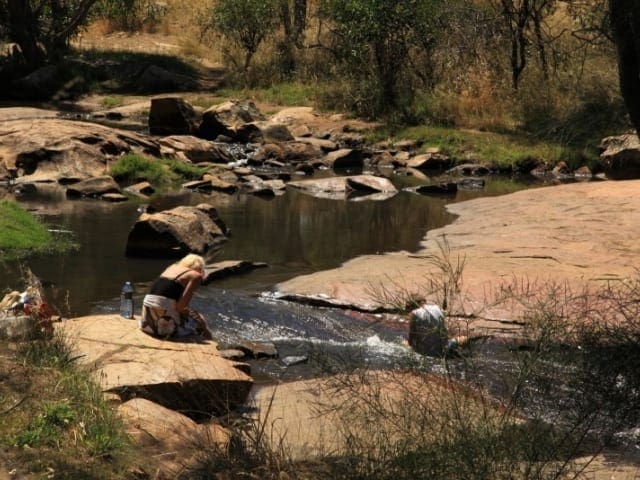This hike is classified as Grade 2 (Easy) due to its distance exceeding the typical Grade 1 limit of 5km. While the terrain itself is relatively easy and may still be suitable for all abilities, feel free to turn back at any point for a shorter adventure.
The Syd's Rapids and Aboriginal Heritage walk trails are located where the Walyunga National Park joins the Swan River, 40 kilometres north east of Perth. These family friendly trails provide interpretation on the indigenous history, plants and animals and the history of white water rafting in this beautiful location.
Walyunga National Park lies in the Darling Range, just behind the Darling Scarp. The Swan River runs through the centre of the park, forming a string of placid pools along the valley floor in summer, and a raging torrent with long series of rapids in winter. The latter provides one of Australia's best white water canoeing courses and is part of the annual Avon Descent race each August. The 5.2 kilometre Syd's Rapids trail leaves from Boongarup Pool and is a flat easy walk up to the rapids. Walyunga contains one of the largest known Aboriginal campsites around Perth and was still in use by the Nyoongar people late last century. Archaeological evidence suggests that the area has been used by regional tribes for more than 6000 years. The easy 1.2-kilometre Aboriginal Heritage Trail meanders along the river bank, between Walyunga Pool and Boongarup Pool, and allows people to learn about Aboriginal myths and legends and see the park's plants and animals through the eyes of the original inhabitants. The park is also known for sensational wildflowers in winter and spring, abundant native animals and rugged valley scenery which can also be enjoyed on a number of other, longer loop trails It is best to walk this trail in a clockwise direction starting from Walyunga Pool. If you wish to just walk up to Syd's Rapids, you can start from Boongarup Pool. The two trails combined will take just over three hours to complete.
For more information, a location map and GPS file please visit Trails WA.
Got some great shots from this hike? Upload your photos here to inspire others and show off the beauty of the trail!
Submitting your photos doesn’t mean you lose ownership. You can be credited for your contributions, and you can request removal at any time.
Please don’t copy GPX files or content from this site to AllTrails or other platforms. Each trail has been personally mapped, documented, and refined to support Australia’s bushwalking and hiking community. While some details come from land managers, every listing reflects significant personal effort. This is a free, community-driven initiative—your respect helps keep it that way.
It looks like I don’t have a GPX file for this trail yet. If you have one to share, please email it to me! I’ll verify it against official maps before adding it to help other hikers have a safer, easier experience. Thanks for contributing to a better hiking resource.
Getting there
Getting to the trailhead: Walyunga National Park.
Closest towns to this walk: Bullsbrook, Chidlow, Darlington, Ellenbrook, Gidgegannup, Henley Brook, Midland, Mundaring, Swan View, Upper Swan
Similar walks nearby
Looking for more walks in or near Walyunga National Park? Try these trails with a similar difficulty grade.
Favourite

Favourite

Favourite

Favourite

Track grade
Grade 2 (Easy) - A Gentle Introduction to Inclines: Grade 2 on the
AWTGS represents easy walking tracks that offer a slightly more challenging experience compared to Grade 1. Similar to Grade 1, no prior bushwalking experience is required. The track surface is typically hardened or compacted and may have gentle hill sections or occasional steps. The total distance of a Grade 2 walk is typically no greater than 10 kilometers. These walks are still suitable for families with a bit more experience or those seeking a gentle introduction to some inclines.
Explore safe
Plan ahead and hike safely! Carry enough water, pack layers for changing conditions, and bring safety gear like a torch, PLB, and reliable communication device. Check official sources for trail updates, closures, and access requirements, and review local weather and bushfire advice. Most importantly, share your plans with someone before you go. Being prepared makes for a safer and more enjoyable hike! Stay Safe, Explore More, and Always #ExploreSafe.
Packing checklists
What you carry in your pack depends on factors like weather, terrain, and your adventure type. Not sure what to bring? My free planning, food, and packing checklists are a great starting point, covering day hikes, overnight trips, and multi-day adventures. Use them to customise your kit and always prioritise safety.
Let someone know
Before heading out, take a moment to fill out your trip intentions form. It’s a quick way to share your hike details with family or friends. If something goes wrong, they can notify emergency services, ensuring a faster response and peace of mind. Stay safe and enjoy your adventure
Suggest an edit
Spotted a change on this trail? Maybe there are new features, the route has shifted, or the trail is permanently closed. Whatever the update, I’d love your input. Your feedback helps fellow hikers stay informed and ensures that our trail info stays fresh and reliable.






